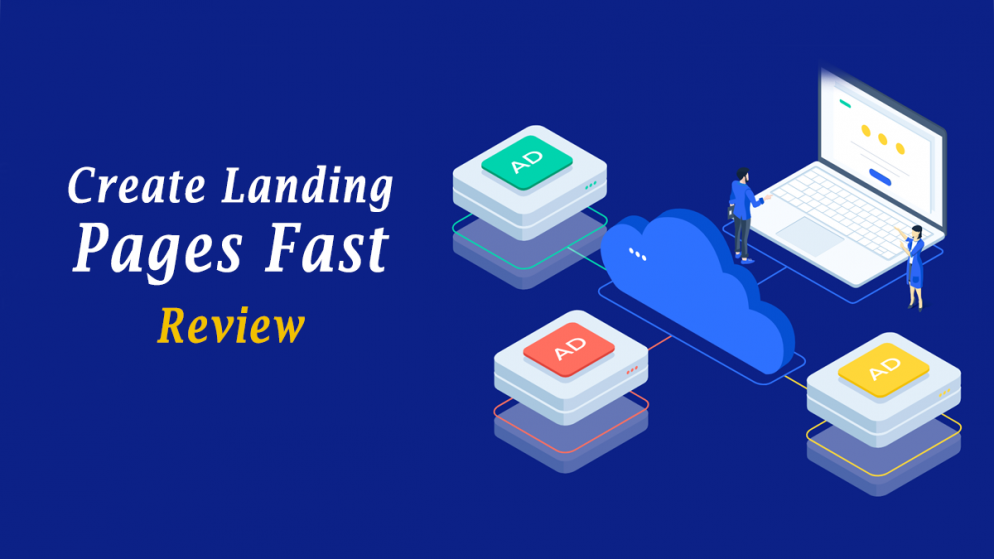

Table of Contents
What Is Instapage?
Instapage is a web-based software platform that allows businesses and individuals to create and optimize landing pages for their online marketing campaigns. A landing page is a standalone web page that is designed with a specific goal in mind, such as capturing leads, promoting a product, or driving conversions.
Instapage provides a drag-and-drop interface and a range of pre-designed templates that make it easy to create customized landing pages without the need for coding or web development skills. Users can choose from a variety of elements, including text, images, videos, buttons, forms, and more, to build visually appealing and high-converting landing pages.
One of the key features of Instapage is its optimization capabilities. It allows users to run A/B tests and analyze the performance of different page variations to determine which ones yield the best results. This data-driven approach helps businesses improve their conversion rates and maximize the effectiveness of their marketing campaigns.
Furthermore, Instapage integrates with various marketing tools and platforms, such as email marketing services, CRM systems, and advertising platforms, enabling seamless data synchronization and campaign management.
Instapage is a popular tool for marketers and businesses looking to create professional and optimized landing pages to drive conversions and achieve their marketing objectives.
How Instapage Work?
Instapage works by providing users with a user-friendly interface and a set of tools to create, optimize, and manage landing pages for their marketing campaigns. Here’s a general overview of how Instapage works:
- Landing Page Creation: Users start by selecting a template from Instapage’s library or creating a landing page from scratch. The drag-and-drop editor allows users to easily customize the page by adding text, images, videos, buttons, forms, and other elements. Users can also adjust the layout, colors, fonts, and other design elements to match their branding.
- Integration and Customization: Instapage integrates with various marketing tools and platforms, allowing users to connect their landing pages with their email marketing services, CRM systems, advertising platforms, and more. This integration enables data synchronization and streamlines campaign management.
- Testing and Optimization: Instapage provides A/B testing capabilities, which allow users to create multiple variations of their landing pages and test them against each other. Users can change elements, such as headlines, images, or call-to-action buttons, and analyze the performance of each variation to determine which one generates the best results. This iterative testing and optimization process helps improve conversion rates and campaign effectiveness.
- Analytics and Reporting: Instapage provides detailed analytics and reporting features to track the performance of landing pages. Users can monitor key metrics such as page visits, conversions, bounce rates, and engagement to gain insights into the effectiveness of their campaigns. These insights can help users make data-driven decisions to optimize their landing pages further.
- Collaboration and Publishing: Instapage allows multiple team members to collaborate on landing page creation and optimization. Users can set different roles and permissions for team members, making it easier to work together on projects. Once a landing page is ready, it can be published to a custom domain or integrated into existing websites and marketing campaigns.
Instapage simplifies the process of creating, testing, and optimizing landing pages, providing marketers and businesses with a comprehensive solution for driving conversions and achieving their marketing goals.
Instapage Features
Instapage offers a wide range of features to help users create, optimize, and manage their landing pages effectively. Here are some key features of Instapage:
- Drag-and-Drop Editor: Instapage provides a user-friendly, drag-and-drop editor that allows users to easily customize landing pages without the need for coding or design skills. Users can add and arrange elements, change colors and fonts, and adjust the layout to create visually appealing pages.
- Pre-designed Templates: Instapage offers a library of professionally designed templates that cater to various industries and campaign goals. Users can choose from a wide selection of templates and customize them to match their branding and campaign requirements.
- A/B Testing: Instapage enables users to run A/B tests on their landing pages. Users can create multiple variations of a page and test different elements, such as headlines, images, or call-to-action buttons, to determine which version performs better in terms of conversions and engagement.
- Heatmaps and Analytics: Instapage provides heatmaps that visually represent user behavior on landing pages. Heatmaps help users understand how visitors interact with their pages, which areas are getting more attention, and where users are clicking. Additionally, Instapage offers detailed analytics and reporting features to track key metrics, such as conversions, page visits, bounce rates, and more.
- Dynamic Text Replacement: With Instapage’s dynamic text replacement feature, users can personalize their landing pages based on search keywords or ad campaign parameters. This helps improve relevancy and conversion rates by delivering targeted messages to visitors.
- Integrations: Instapage integrates with a wide range of marketing tools and platforms, including email marketing services, CRM systems, advertising platforms, and more. This allows users to seamlessly connect their landing pages with their existing marketing stack and automate data synchronization.
- Collaboration and Team Management: Instapage offers collaboration features that allow multiple team members to work together on landing page creation and optimization. Users can set different roles and permissions, assign tasks, and leave comments, streamlining the workflow and ensuring efficient teamwork.
- Landing Page Publishing: Instapage provides various publishing options. Users can publish their landing pages to a custom domain, embed them on existing websites, or use Instapage’s WordPress plugin to integrate them into WordPress sites. This flexibility makes it easy to deploy landing pages across different channels.
These are just some of the notable features that Instapage offers to help users create high-converting landing pages and optimize their marketing campaigns.
How To Use Instapage?
To use Instapage effectively, you can follow these general steps:
- Sign Up and Set Up Account: Visit the Instapage website and sign up for an account. Provide the necessary information and choose a subscription plan that suits your needs. Once your account is set up, you can start using Instapage.
- Choose a Template or Create from Scratch: After logging into your Instapage account, you can choose a pre-designed template from the template library that aligns with your campaign goals and industry. Alternatively, you can create a landing page from scratch using the blank template option.
- Customize the Landing Page: Use Instapage’s drag-and-drop editor to customize the landing page. Add and arrange elements such as text, images, videos, buttons, forms, and more. Modify the layout, colors, fonts, and other design elements to match your branding and campaign requirements.
- Edit Page Settings: Configure the settings of your landing page, such as the page title, URL, SEO settings, meta tags, and social sharing settings. This helps optimize your landing page for search engines and social media platforms.
- Set Up Form and Integrations: If you have a form on your landing page to collect visitor information, configure the form fields and integrate it with your email marketing service or CRM system. This ensures that leads are captured and stored seamlessly.
- Run A/B Tests: Create multiple variations of your landing page and set up A/B tests to compare their performance. Change different elements, such as headlines, images, or call-to-action buttons, and track the conversion rates and engagement metrics to identify the best-performing version.
- Analyze Performance and Optimize: Utilize the analytics and reporting features provided by Instapage to monitor the performance of your landing pages. Analyze key metrics like conversions, page visits, bounce rates, and engagement. Use this data to identify areas for improvement and make data-driven decisions to optimize your landing pages further.
- Collaborate and Publish: If you’re working with a team, invite team members to collaborate on the landing page creation and optimization process. Set roles and permissions, assign tasks, and communicate within the platform. Once your landing page is ready, publish it to a custom domain or integrate it into your existing website or marketing campaigns.
Remember, these steps provide a general framework for using Instapage, but the specific details may vary based on your unique campaign goals and requirements. Instapage offers extensive documentation and support to guide you through the process and make the most of its features.
Instapage Pricing
Please note that pricing details may have changed since then, so I recommend visiting the Instapage website for the most up-to-date information. Here are the general pricing tiers available:
- Business Plan: The Business Plan is geared towards small to medium-sized businesses and starts at $199 per month when billed annually. It includes features like unlimited conversions, unlimited A/B testing, collaboration tools, access to the Instapage template library, and integration with popular marketing platforms.
- Custom Plan: For larger businesses or enterprises with specific requirements, Instapage offers custom pricing based on individual needs. This plan provides additional features such as custom feature implementation, dedicated support, and advanced security options.
- Enterprise Plan: The Enterprise Plan is suitable for larger organizations with complex marketing needs. It offers advanced customization options, additional security features, dedicated account management, advanced analytics, and other enterprise-grade functionalities. Pricing for this plan is available upon request.
Pricing may vary depending on factors such as the number of landing pages, unique visitors, and additional add-ons or services you may require. Instapage also occasionally offers promotions or discounts, so it’s worth checking their website for any current offers.
For the most accurate and up-to-date pricing information, I recommend visiting the Instapage website or contacting their sales team directly. They will be able to provide you with detailed pricing information based on your specific needs and requirements.
Who Is Instapage Best For?
Instapage is best suited for marketers, advertisers, and businesses of various sizes who are looking to create high-converting landing pages and optimize their online marketing campaigns. Here are some specific groups of users who can benefit from using Instapage:
- Digital Marketers: Digital marketers can leverage Instapage to create targeted landing pages for their online advertising campaigns. It provides them with the tools to design landing pages that align with their campaign goals, capture leads, and drive conversions.
- Small and Medium-Sized Businesses: Instapage is well-suited for small and medium-sized businesses that want to create professional landing pages without the need for coding or web design skills. It offers an intuitive interface and pre-designed templates that make it easy for businesses to create effective landing pages that generate results.
- Agencies and Freelancers: Marketing agencies and freelancers can use Instapage to create landing pages for their clients. The collaboration features allow them to work efficiently and deliver high-quality landing pages that align with their clients’ brand identities and campaign objectives.
- E-commerce Businesses: While Instapage is primarily a landing page builder, e-commerce businesses can also use it to create product landing pages, promotional campaigns, or lead generation pages. It provides the flexibility to customize pages and integrate with other marketing tools.
- Conversion Rate Optimization (CRO) Professionals: Instapage’s A/B testing capabilities make it valuable for CRO professionals who want to experiment with different page variations and optimize conversion rates. The ability to analyze performance metrics and make data-driven decisions is crucial for CRO efforts.
- Startup Companies: Startups can benefit from Instapage’s user-friendly interface and rapid landing page creation capabilities. It allows them to quickly build landing pages for product launches, capture leads, and validate their business ideas through testing and optimization.
Instapage caters to a wide range of users, from individual marketers to businesses of different sizes and industries. Whether you’re running advertising campaigns, seeking lead generation, or optimizing conversion rates, Instapage provides the necessary tools and features to create effective landing pages and maximize your marketing efforts.
Instapage Alternatives
While Instapage is a popular landing page platform, there are several alternatives available that offer similar functionality. Here are some notable alternatives to Instapage:
- Unbounce: Unbounce is a well-known landing page builder that provides a drag-and-drop editor, A/B testing capabilities, and integration with various marketing tools. It offers a wide range of customizable templates and advanced features like dynamic text replacement and targeted overlays.
- Leadpages: Leadpages is a landing page builder that focuses on simplicity and ease of use. It offers a drag-and-drop editor, A/B testing, integration with popular email marketing services, and a library of customizable templates. Leadpages also includes features like pop-ups, alert bars, and opt-in text campaigns.
- ClickFunnels: ClickFunnels is a comprehensive sales funnel and landing page builder. It allows users to create complete marketing funnels, including landing pages, opt-in forms, sales pages, and order forms. ClickFunnels offers pre-designed templates, A/B testing, integration with various tools, and extensive e-commerce functionality.
- Landingi: Landingi is a landing page platform that offers a drag-and-drop editor, A/B testing, and integration with popular marketing tools. It provides a wide range of customizable templates and includes features like pop-ups, dynamic content, and built-in analytics.
- GetResponse: GetResponse is primarily an email marketing platform but also offers landing page functionality. It provides a drag-and-drop editor, A/B testing, integration with marketing tools, and a variety of templates. GetResponse focuses on combining email marketing, landing pages, and marketing automation in one platform.
- HubSpot: HubSpot is a comprehensive marketing platform that offers a range of tools, including landing page creation. It provides a drag-and-drop editor, A/B testing, and integration with HubSpot’s CRM and marketing automation features. HubSpot also includes advanced analytics and personalization capabilities.
These are just a few examples of alternatives to Instapage. Each platform has its own unique features, pricing structures, and target audiences. It’s recommended to explore and compare different options to determine which one best suits your specific needs and requirements.
FAQs
Can I try Instapage before purchasing a plan?
Yes, Instapage offers a 14-day free trial that allows you to explore and test the platform’s features and capabilities.
Does Instapage provide customer support?
Yes, Instapage offers customer support to its users. The level of support may vary based on the pricing plan, with higher-tier plans typically receiving priority support.
Can I use my own domain with Instapage landing pages?
Yes, Instapage allows you to use your custom domain with your landing pages. This helps maintain consistency with your branding and provides a professional appearance.
Does Instapage offer mobile-responsive templates?
Yes, Instapage provides a selection of mobile-responsive templates. These templates are designed to automatically adapt and display correctly on various devices, ensuring a seamless experience for mobile users.
Can I integrate Instapage with other marketing tools?
Yes, Instapage integrates with popular marketing tools and platforms such as email marketing services, CRM systems, advertising platforms, and more. This allows you to connect and synchronize data between Instapage and your existing marketing stack.
Is Instapage suitable for e-commerce businesses?
While Instapage primarily focuses on creating and optimizing landing pages, it can be used by e-commerce businesses for specific purposes, such as creating product landing pages or promotional campaigns. However, for full e-commerce functionality, dedicated e-commerce platforms may be more suitable.



